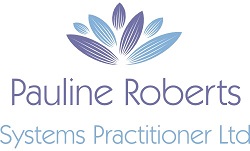A loss of money, being sold a service that could never be provided, rising costs without agreement, delaying and deflection tactics. This is just a small selection of customer service horrors that I have faced this year so far. I am sure we have all experienced poor customer service at some time or another. Sadly, it appears to be on the rise.
As a systems thinking practitioner, it is not hard to see when it is due to poor internal policies and procedures, structures that hinder rather than enable, when staff have too little or too much autonomy, when the organisation is struggling in the changing environment and those unfortunate cases when the culture of ‘customer last’ rather than ‘customer first’ has become the mandate and behaviour from those at the top of the tree.
First on my list of observations are the delaying tactics used to make sure ‘just another payment’ is made or a deadline is missed or something is offered ‘just too late’. One company I am dealing with has a mantra of, ‘we can’t cancel it because it’s going through. You have to ring back in 24 hours’. When 24 hours arrives, you guessed it, there’s a fault/ complication, you need to ring back in another 24 hours and so the stories goes, rumbling on into infinity. It is nearly as annoying as the automated call triage systems that send you round in circles and the online chat bots which are utterly useless.
Second on my list is blaming the person at the front line of customer service. There appears to be an intense increase in post contact text messages, emails or phone calls to see, ‘how our customer service operator was today’. Seriously, please stop this. Any disgruntled customer is not going to give a good answer to this and the poor person who is probably working to a dictated script and within impossible constraints gets the blame for not being nice enough. When your policies and procedures hinder customers, rather than helping them, it is your fault. Yes you, manager, the one who put the policy or process in place. It’s you, not the operative.
In the viable system model, we talk about co-ordination failure, or system 2 failure. It causes havoc internally and for customers. Mixed up customer records, delayed actions, disconnect between departments. All of this contributes to the mayhem and culture in the organisation. It is this that we get fed up with. Not the poor operator who is the fall guy for your disastrous internal processes.
The purpose driving all of these actions is to serve the organisation. They want the profit and they want it now. They try to lock you into things you don’t want, which don’t serve you well. It is all driven by the purpose to serve the organisation and not the customer. As a result of this purpose, boundaries are set which do not have customer opinion or needs sitting within the sights of the decision mkaing. We are outside, a passive receiver of what is done to us, with little escape from the pain and a difficult pathway to any alternatives. It would only take a small exercise with critical systems heuristics to expose the realities, but organisations already know the realities and don’t really care, as long as they make their profit.
I would say that systems thinking is needed more than ever in these instances, but is it? These organisations aren’t like this because they are unaware of how to be different. They are like this because they purposely choose to be. When that purpose is at play from the very top, there is much less we can do about it.
As a customer I am speaking with my feet. I have left two companies this year. One I have been a customer of for 25 years, the other 35 years. Never again will I touch their products or services. These organisations are creating their own demise and for a systems thinking practitioner, it is very easy to see how and why.
As the strategies of organisations have changed, the strategies used by us, their customers, need to change also. Gone are the days of loyalty and an expectation of good customer service in return for that loyalty. Here are the days of being as hard-nosed about how we spend our money as they are about how they want to take it from us.












